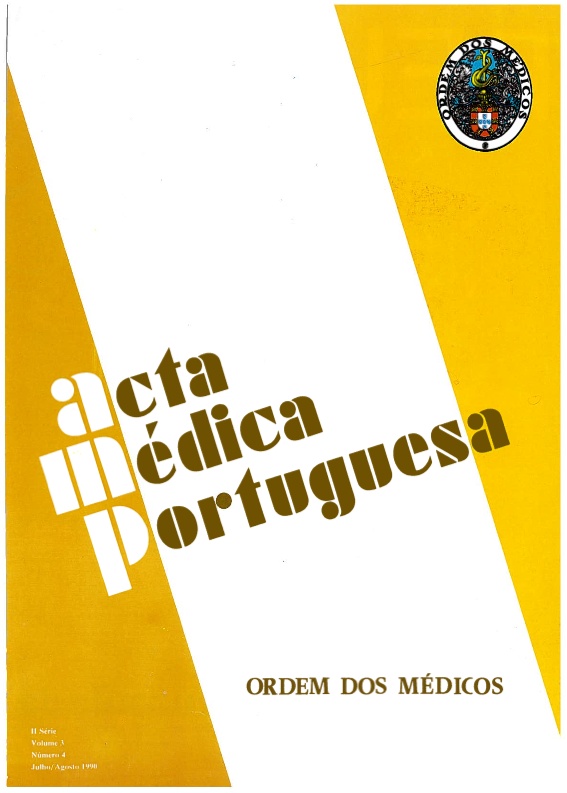Gastrectomia total com construção de um neo estômago com jejuno. Estudo retrospectivo de 120 doentes.
DOI:
https://doi.org/10.20344/amp.4571Resumo
Results obtained in 120 patients with gastric carcinoma, and submitted between 1982 and 1989, to a total gastrectomy and a new technique of reconstruction with jejunum, are analyzed retrospectively. This technique associates, a jejunoplication around the terminal esophagus with the purpose to eliminate the entero-esophageal reflux and the risk of dehiscence, and a double jejuno-jejunostomy with the target to delay the emptying of foods and to increase the reservoir function of the neo-stomach. In 63 of these patients a lymphadenectomy type R2-R3 has been held and in the remainder a type R1 lymph node dissection. Pre-operative chemotherapy was done when there was significant weight loss or proved obstruction of the cardia or pylorus by a radioisotopic method. Post-operative chemotherapy was continued immediately after operation in all the patients with pre-operative improvement. Operative mortality until the 60th day of Hospital stay was 5.8% and was mainly related with the advanced age of the patients and the spread and localization of the tumor. Operative morbidity was also more marked in tumors spreading to the cardia. The five years actuarial survival rate was 17.2% to the stage III and IV and 38.8% to the stage I and II. The quality of life of the patients has been favored by the kind of gastric reconstruction that has been used: Jejunoplication reduce the entero-esophageal reflux to nearly 20% and the double enterostomy, specially if the duodenal transit is maintained, induce a more slow post-operative emptying than other kinds of reconstruction. This fact is related with a more physiologic absorption of glucose and to a more favorable nutritional condition.Downloads
Downloads
Como Citar
Edição
Secção
Licença
Todos os artigos publicados na AMP são de acesso aberto e cumprem os requisitos das agências de financiamento ou instituições académicas. Relativamente à utilização por terceiros a AMP rege-se pelos termos da licença Creative Commons ‘Atribuição – Uso Não-Comercial – (CC-BY-NC)’.
É da responsabilidade do autor obter permissão para reproduzir figuras, tabelas, etc., de outras publicações. Após a aceitação de um artigo, os autores serão convidados a preencher uma “Declaração de Responsabilidade Autoral e Partilha de Direitos de Autor “(http://www.actamedicaportuguesa.com/info/AMP-NormasPublicacao.pdf) e a “Declaração de Potenciais Conflitos de Interesse” (http://www.icmje.org/conflicts-of-interest) do ICMJE. Será enviado um e-mail ao autor correspondente, confirmando a receção do manuscrito.
Após a publicação, os autores ficam autorizados a disponibilizar os seus artigos em repositórios das suas instituições de origem, desde que mencionem sempre onde foram publicados e de acordo com a licença Creative Commons









